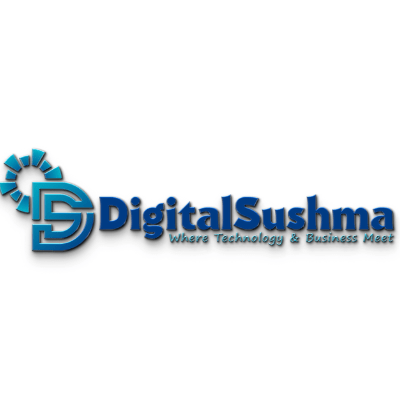Artificial intelligence (AI) tools and Software-as-a-Service (SaaS) tools are two important technologies that businesses rely on today. Though they sound similar, they are quite different in their approach and capabilities. This article will provide an overview of AI and SaaS tools, highlight their key differences, discuss their major functions and use cases, and answer some frequently asked questions.
What are AI tools?
AI tools utilize technologies such as machine learning, deep learning and natural language processing to enable systems to learn from data and mimic human intelligence for tasks like speech recognition, visual perception, and decision making. AI tools can analyze large volumes of structured and unstructured data to uncover insights, patterns and make predictions.
What are SaaS tools?
SaaS tools refer to software applications that are hosted in the cloud and delivered over the internet. Users can access these tools via subscriptions rather than purchasing licenses or servers. SaaS tools are highly scalable and accessible from any device with an internet connection. They follow a pay-as-you-go pricing model based on usage or subscriptions.
Key Differences Between AI and SaaS Tools
While both AI tools and SaaS tools leverage cloud technology, they differ significantly in their focus and capabilities:
- AI tools are focused on providing intelligent functions like automation, prediction, personalization using technologies like machine learning and NLP. SaaS tools provide software applications for business functions.
- AI tools require large amounts of data to learn from and rely heavily on compute resources. SaaS tools do not need data training and mainly provide software functionality.
- AI tools are built to continually improve themselves over time based on new data. SaaS tools do not self-learn or self-improve beyond software updates.
- AI tools excel at handling unstructured data from images, videos, texts, etc. SaaS works with structured data in databases.
- AI tools are highly technical and require data science expertise. SaaS tools are designed for ease of use.
Also Read: Popular SaaS Trends of 2023
Major Functions and Capabilities
AI Tools Key Functions:
- Natural language processing for sentiment analysis, chatbots, voice assistants etc.
- Machine learning for pattern detection, predictions, recommendations, automated decision making
- Computer vision for facial recognition, object detection, image labeling
- Speech recognition for voice to text transcription and assistants
- Predictive analytics to forecast sales, demand, trends, outcomes
SaaS Tools Key Functions:
- Cloud-based on-demand software applications and tools
- Scalable and flexible pay-as-you-go pricing model
- Accessible from any device with an internet connection
- Popular for customer relationship management, human resource management, billing, and more
- Do not require upfront infrastructure and easy to implement
Also Read: Top 10 AI Graphic Design Tools for Boosting Creativity and Efficiency
Use Cases and Applications
AI Tools Useful For:
- Building predictive models using large historical datasets
- Personalizing recommendations and experiences for users
- Analyzing unstructured data like text, voice, video, images
- Automating workflows, processes and decision making
- Developing chatbots, virtual assistants, and smart devices
SaaS Tools Useful For:
- Email, collaboration and communication tools like Gmail or Slack
- Customer relationship management (CRM) software like Salesforce or Zoho
- Human resource (HR) management platforms like BambooHR
- Project management and workflow tools like Asana or Trello
- Billing and invoicing software like Freshbooks or Invoice2go
- Database and analytics tools like Airtable or Tableau
Also Read: Best AI 3D Model Generators: 10 Cutting-Edge AI Generators
Frequently Asked Questions (FAQs)
Can AI tools and SaaS tools complement each other?
Yes, AI capabilities can be incorporated into SaaS tools to make them smarter and more intuitive to use. For example, a CRM SaaS tool can integrate AI to provide predictive analytics for customer behavior. The combination of AI and SaaS delivers powerful solutions.
What are some leading providers of AI tools and SaaS tools?
Leading AI tools come from providers like IBM Watson, Amazon Web Services, Microsoft Azure, Google Cloud. Top SaaS providers include Salesforce, Oracle, SAP, Slack, Dropbox, HubSpot among others.
How to evaluate which tool is right for your needs?
Consider the problem you want to solve, data and integration requirements, level of technical expertise needed, budget constraints, and scalability needs. Try free trials of tools to evaluate them hands-on before deciding. Consider your specific requirements. If data analysis, automation, or prediction is paramount, AI tools may be the answer. For software needs without advanced AI demands, SaaS tools are likely more suitable.
What are the costs associated with AI vs SaaS tools?
AI tools have higher upfront development costs and computing requirements while SaaS tools have lower startup costs and pay-as-you-go pricing. Long term TCO can be evaluated for total cost analysis. AI tools can be resource-intensive to develop and implement. SaaS tools follow subscription-based models, where costs vary based on usage and features.
What is the future outlook for these technologies?
Both AI and SaaS technologies are poised for continuous growth. AI will become more accessible, while SaaS tools will continue to offer enhanced features and integration possibilities. The global AI market is projected to see strong growth as more companies invest in AI capabilities. SaaS tools will also continue evolving in capabilities and cloud delivery. The future will see robust adoption of both AI and SaaS.
Also Read: 18 Best CRM App For iPad & iPhone
Conclusion
AI tools and SaaS tools serve very different purposes for businesses. AI excels at providing intelligence, learning, prediction and automation while SaaS provides scalable software functionality. Companies should evaluate their specific needs, data environment, and use cases to determine where AI or SaaS solutions can maximize impact. With cloud infrastructure improving regularly, both AI tools and SaaS applications will continue driving business value well into the future.






